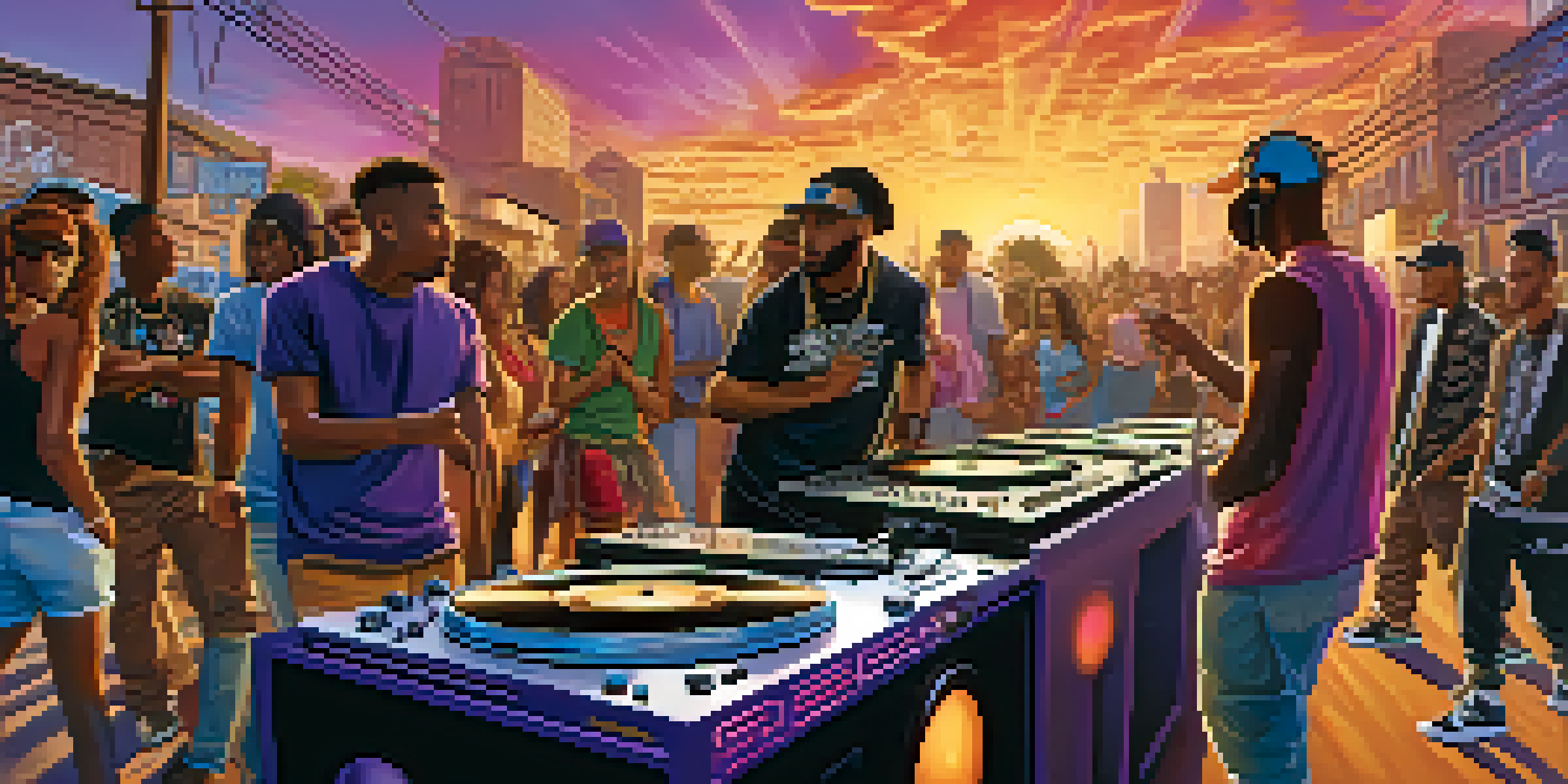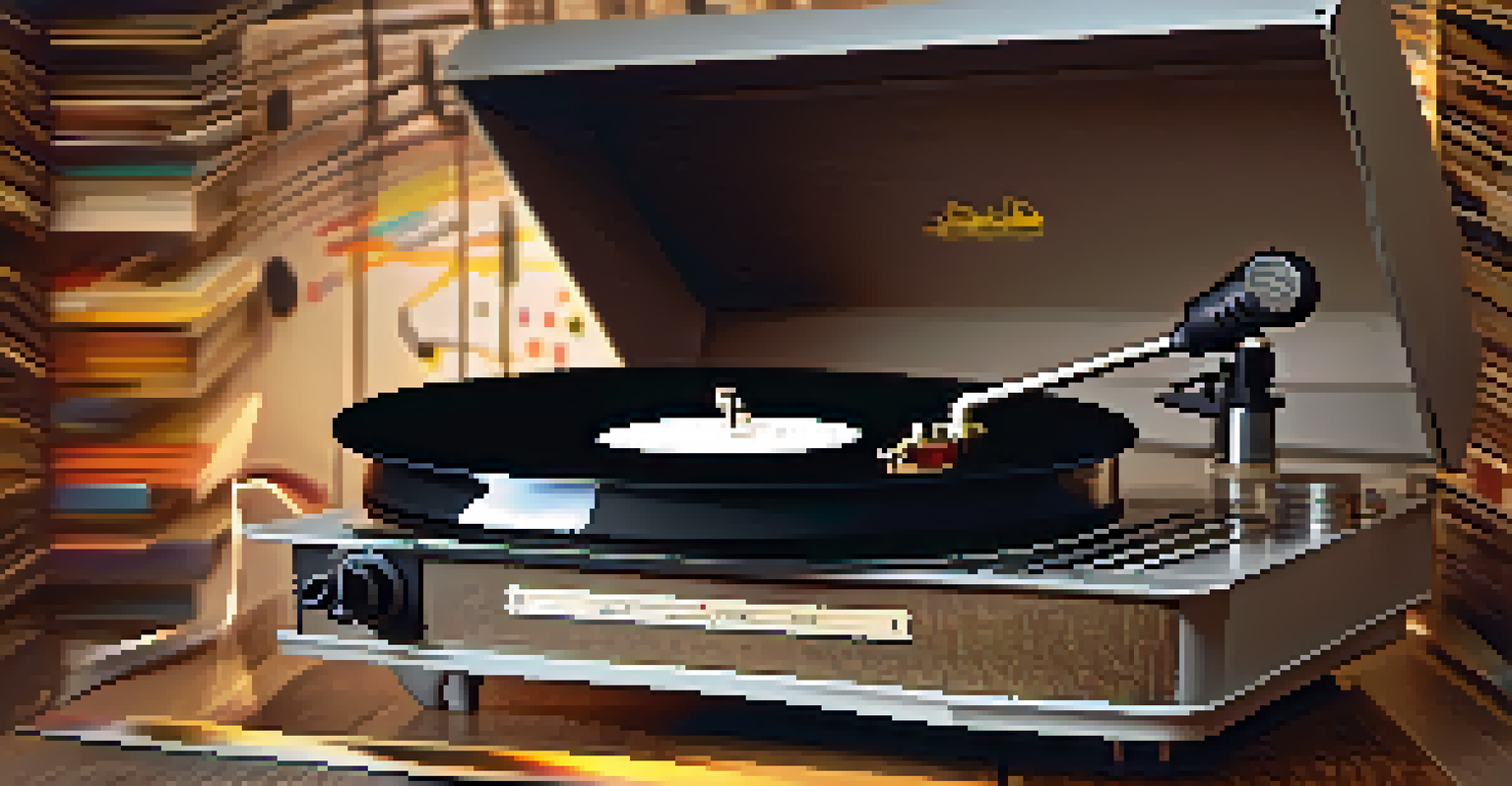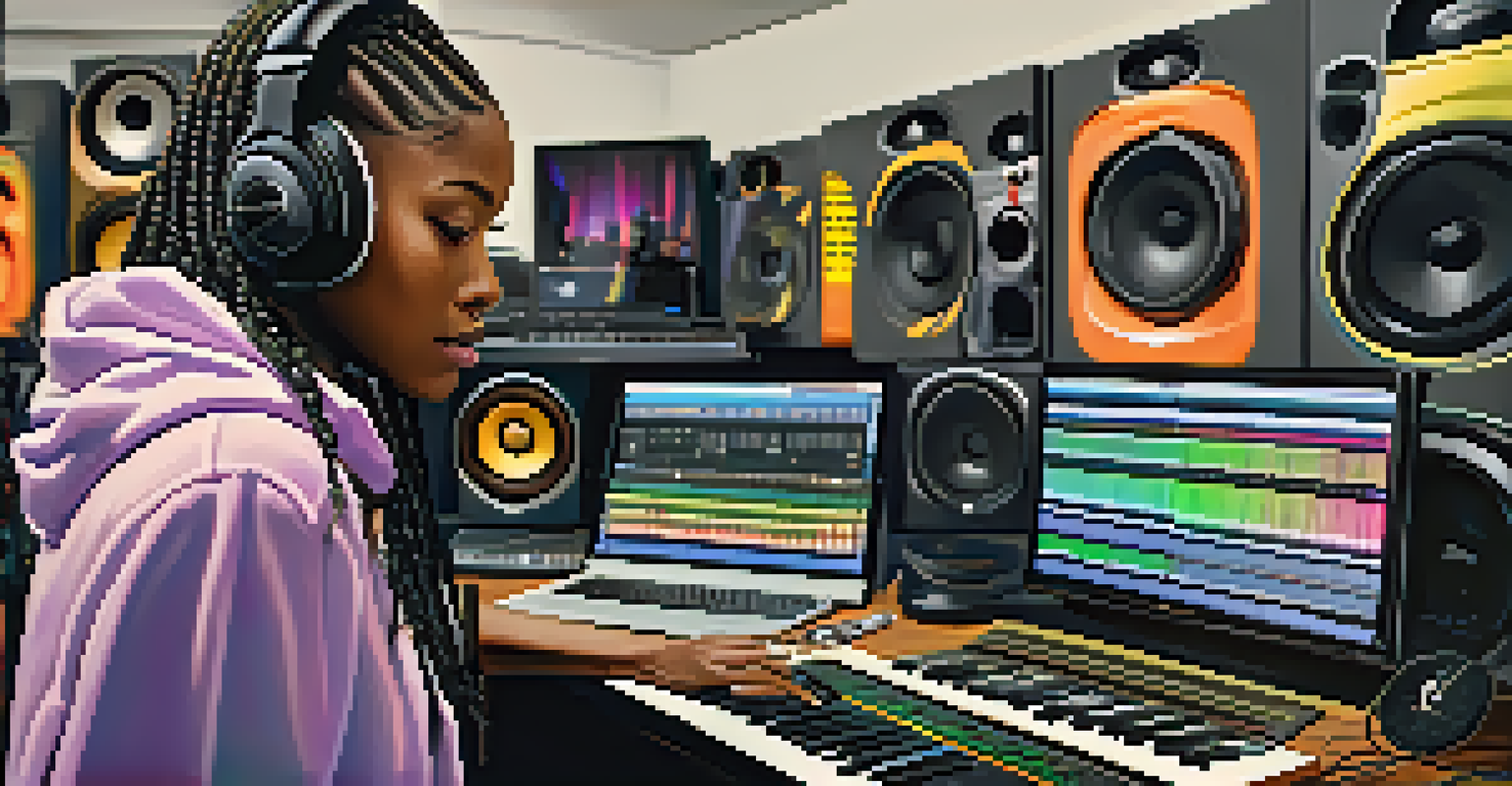The Art of Sampling: Hip-Hop's Innovative Musical Techniques

Understanding Sampling: The Heartbeat of Hip-Hop
Sampling is the process of taking a portion of a sound recording and reusing it in a different song or piece of music. In hip-hop, this technique has become a fundamental building block, allowing artists to create something entirely new from existing sounds. Think of it like cooking; you take ingredients from various dishes and combine them to craft a unique meal.
Music is the shorthand of emotion.
The beauty of sampling lies in its ability to pay homage to past music while also pushing boundaries. By integrating snippets from various genres, hip-hop artists can evoke emotions and memories, creating a rich tapestry of sound. It’s a way of storytelling, where each sample adds a layer of history and context to the new creation.
However, sampling isn’t just about grabbing any old track; it requires a keen ear and a deep understanding of music. Producers must select bits that resonate with their vision, blending them seamlessly into their work. This intricate process showcases the artistry involved in hip-hop production, making it a true craft.
The Evolution of Sampling Techniques in Hip-Hop
Sampling techniques have significantly evolved since hip-hop's inception in the late 1970s. Initially, artists relied on vinyl records, using turntables to loop and manipulate sounds. Over time, advancements in technology brought forth samplers and digital audio workstations, allowing for more intricate and diverse sampling options.

In the early days, producers like DJ Kool Herc would use two turntables to create breakbeats, laying the groundwork for modern sampling. This approach highlighted the raw energy of the music, allowing dancers to showcase their skills. As hip-hop grew, so did the complexity of samples, with artists increasingly incorporating snippets from various genres, including rock, funk, and jazz.
Sampling: A Key Hip-Hop Technique
Sampling is a fundamental technique in hip-hop that allows artists to creatively reuse portions of existing recordings, blending history with innovation.
Today's producers have an arsenal of tools at their disposal, from software to hardware samplers. This evolution has expanded the creative possibilities, enabling artists to experiment with sounds in ways that were once unimaginable. As a result, sampling has become not just a technique but a vital form of artistic expression.
Famous Samples That Changed Hip-Hop Forever
Some samples have become iconic, marking pivotal moments in hip-hop history. Take the famous 'Amen Break' from The Winstons; this six-second drum solo has been sampled thousands of times across various genres, particularly in hip-hop and electronic music. Its infectious beat became the backbone of numerous tracks, showing how a simple loop can have a massive impact.
Sampling is like a form of storytelling. You pick little pieces of your life and the lives of others and create something new.
Another notable example is the use of Curtis Mayfield's 'Move On Up' in Kanye West's 'Touch the Sky.' This sample not only brought a classic sound into contemporary hip-hop but also infused the track with a sense of optimism and empowerment. It perfectly illustrates how sampling can bridge generations and connect listeners with the rich history of music.
These iconic samples often evoke nostalgia while introducing new audiences to the original artists. They serve as a reminder of the deep connections within music; every beat tells a story, and every sample is a thread that weaves together the fabric of hip-hop culture.
Legal Challenges: Navigating the World of Sampling
While sampling offers immense creative potential, it also comes with legal challenges. Artists must navigate copyright laws, which can be complex and often daunting. If a producer wants to use a sample, they typically need to seek permission from the original artist or their label, which can lead to negotiations and licensing fees.
These legal hurdles have led some artists to create 'original' works that are heavily inspired by existing music instead of directly sampling it. This practice has sparked debates within the music community about the ethics of sampling and ownership. While some argue it stifles creativity, others believe it protects the rights of original creators.
Legal Hurdles for Samplers
Artists face complex copyright laws when sampling, often requiring permission from original creators which can influence their creative choices.
Despite the challenges, many artists have found innovative ways to work within the system. Some have turned to lesser-known tracks or even public domain music to avoid legal issues, showcasing their resourcefulness. The dialogue surrounding sampling and copyright continues to evolve, reflecting the dynamic nature of hip-hop and its commitment to creativity.
The Role of Technology in Modern Sampling
Technology has revolutionized the sampling process, making it more accessible than ever. With digital audio workstations (DAWs) and software like Ableton Live, aspiring producers can experiment with sampling right from their laptops. This democratization of music production has led to a surge of creativity within the hip-hop community.
Additionally, advancements in sound manipulation tools allow artists to stretch, pitch-shift, and layer samples in ways that were previously impossible. The ability to chop and screw samples not only enhances the aesthetic but also allows for unique interpretations of the original material. It’s like giving a classic painting a modern twist.
As technology continues to advance, the future of sampling in hip-hop is bright. Artists are now blending live instrumentation with samples, creating hybrid sounds that push the genre further. This fusion speaks to the innovative spirit of hip-hop, showing that the art of sampling is not just a technique but a constantly evolving form of musical expression.
Cultural Impact: Sampling Beyond Music
Sampling's influence extends beyond music into various aspects of culture, including fashion, art, and film. Hip-hop has become a driving force in popular culture, with sampled music often setting the tone for trends and movements. This cross-pollination illustrates how deeply interconnected different art forms can be.
Moreover, sampling has sparked conversations about cultural appropriation and representation within the music industry. As hip-hop artists sample music from diverse backgrounds, it raises questions about ownership and respect for the original creators. This dialogue has encouraged a more nuanced understanding of cultural exchange in the arts.
Technology Transforms Sampling Art
Advancements in technology have revolutionized sampling, making it more accessible and enabling artists to push the boundaries of musical expression.
Ultimately, sampling serves as a bridge between genres, eras, and communities, fostering collaboration and innovation. It showcases the power of music to unite people while also challenging us to reflect on the complexities of cultural heritage. In this way, sampling is not just an artistic choice; it's a cultural statement.
The Future of Sampling in Hip-Hop
As hip-hop continues to evolve, so too will the art of sampling. New technologies, genres, and societal shifts will shape how artists approach this technique. We may see a rise in AI-generated samples or even virtual collaborations, pushing the boundaries of what's possible in music production.
Moreover, the conversation around copyright and sampling rights is likely to continue, influencing how artists incorporate samples into their work. As more musicians advocate for fair use and creative freedom, we may witness a shift in legal frameworks that better support innovation in music.

Ultimately, the future of sampling in hip-hop holds endless possibilities. As artists draw inspiration from both their roots and the world around them, they will continue to redefine this art form, keeping the heartbeat of hip-hop alive and thriving for generations to come.